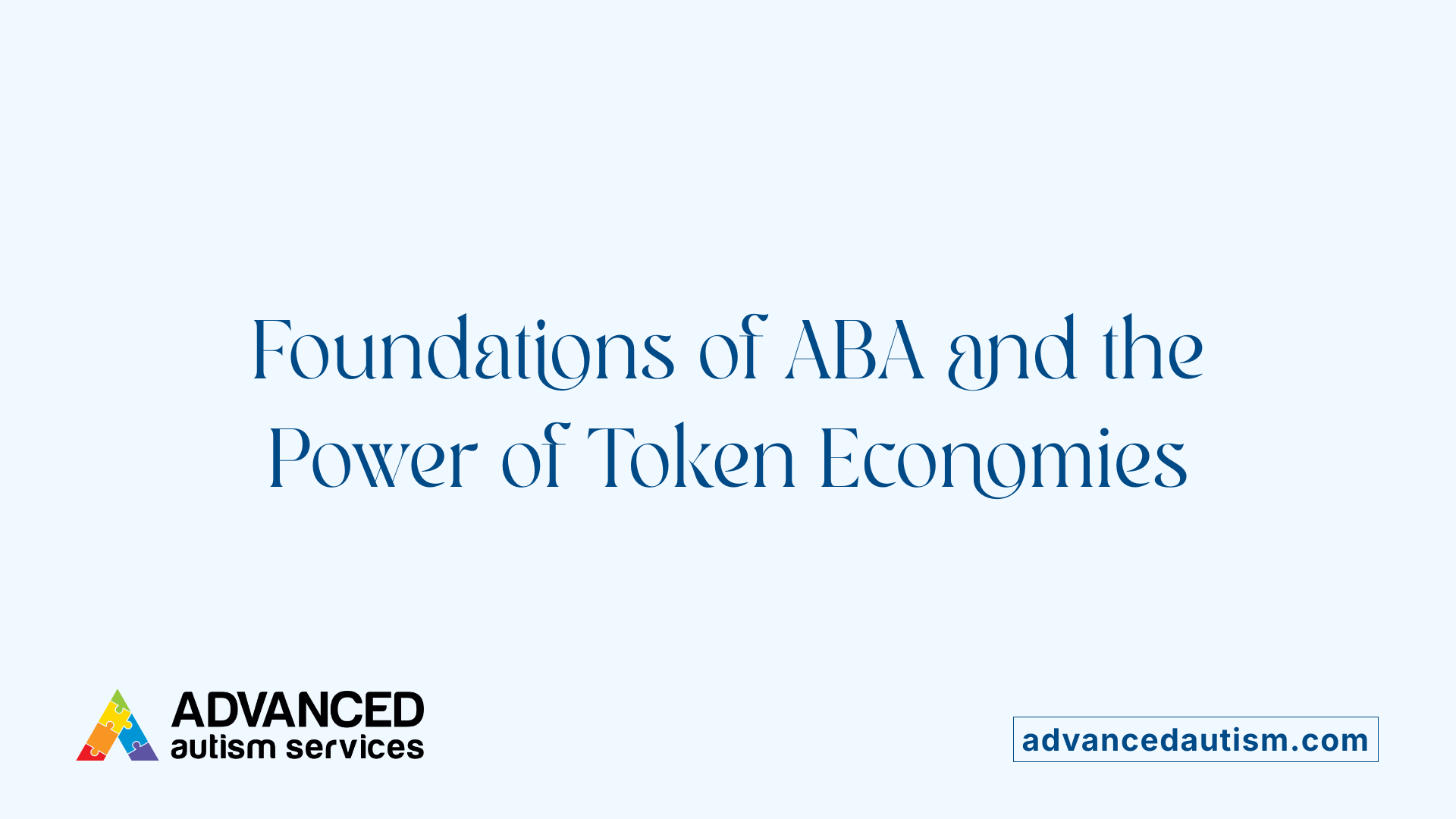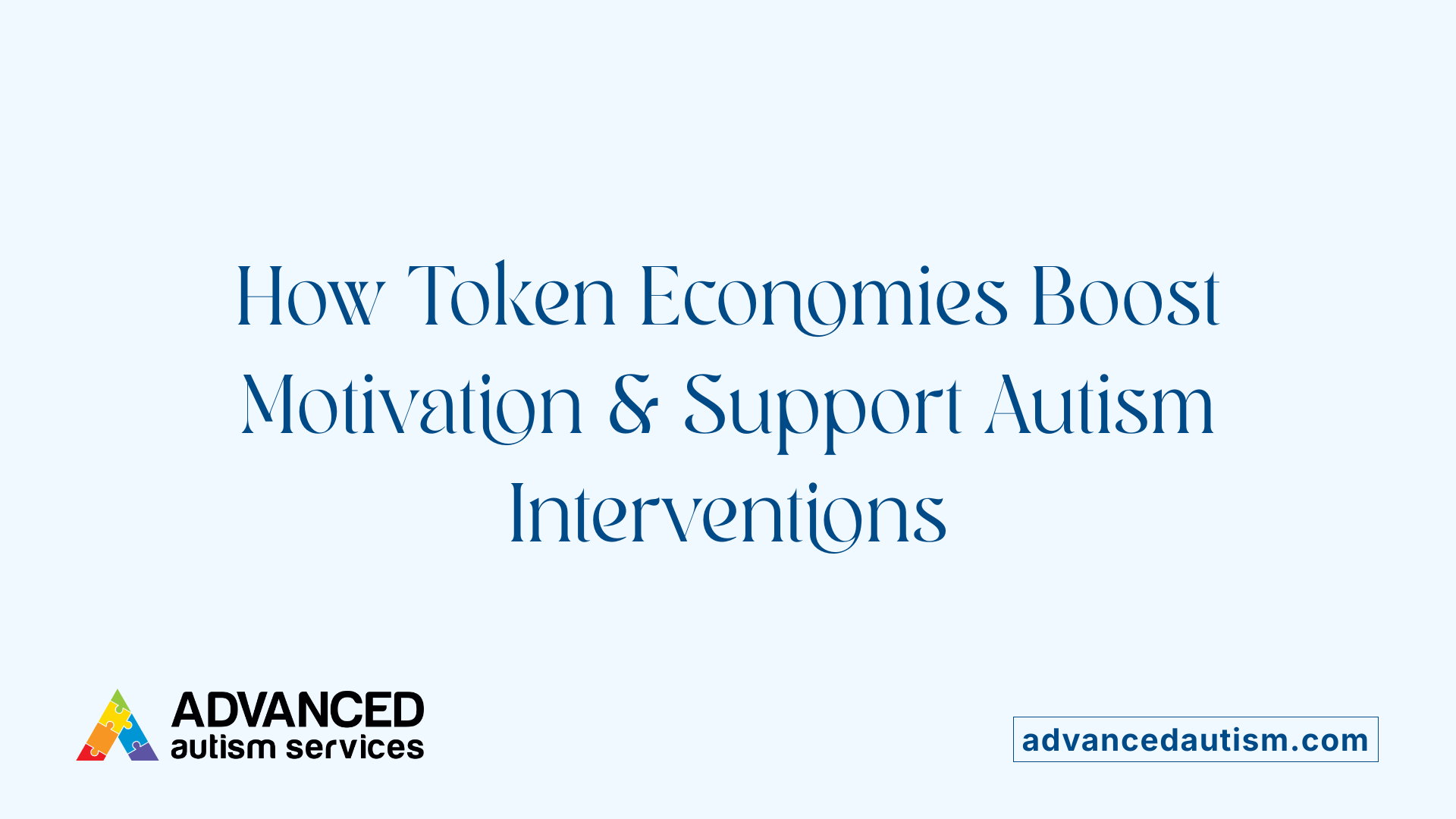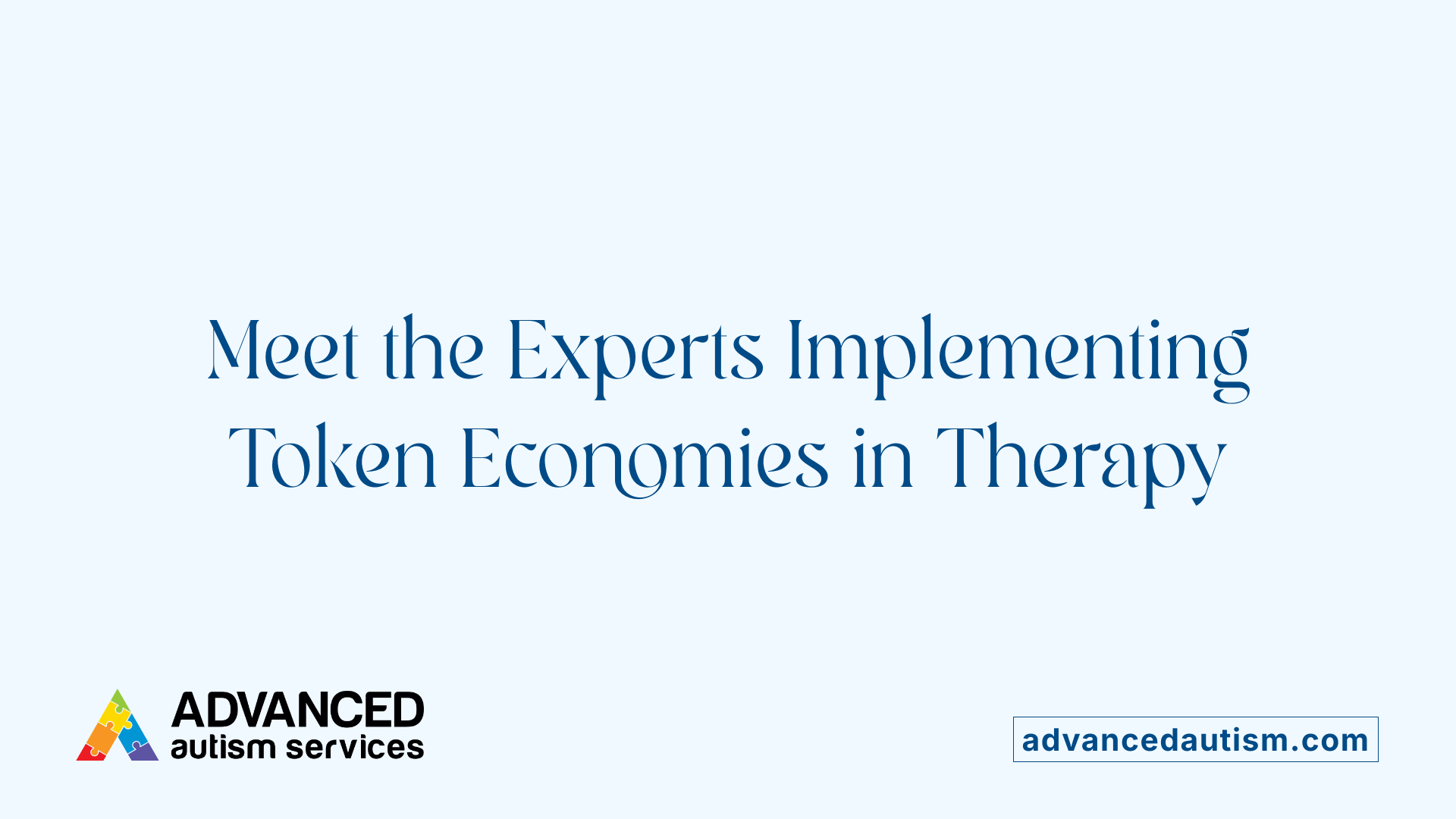Understanding Token Economies in Autism Treatment
Token economies represent a powerful, evidence-based behavior modification system integral to Applied Behavior Analysis (ABA) therapy, widely used in autism spectrum disorder (ASD) interventions. By employing tokens as a form of currency, they create structured reinforcement frameworks that motivate and shape positive behaviors in children and individuals facing various developmental challenges. This article explores the underpinnings, application, and benefits of token economies within ABA therapy, highlighting their role in driving effective therapeutic outcomes.
The Foundation of ABA Therapy and Token Economy Integration

What is Applied Behavior Analysis (ABA) therapy and how is it used in autism treatment?
Applied Behavior Analysis (ABA) therapy is a scientifically supported method that focuses on improving behaviors by analyzing the antecedents, behaviors, and consequences (A-B-Cs). It uses principles such as positive reinforcement and antecedent manipulation to teach skills and reduce problematic behaviors, especially in children with autism spectrum disorder (ASD).
ABA programs are individualized and created by qualified professionals, aiming to enhance communication, social skills, and everyday functioning through carefully designed interventions. Early implementation of ABA therapy leads to significant improvements by focusing on learning and motivation.
How do token economies fit within ABA therapy?
Token economies serve as a structured reinforcement system integrated within ABA therapy to encourage desired behaviors. In this system, tokens act as a form of currency earned for exhibiting targeted behaviors. These tokens can later be exchanged for backup reinforcers like extra playtime or favorite snacks.
The process begins by selecting clear target behaviors, identifying motivating tokens and reinforcers, and setting criteria to earn tokens. The system is flexible and adapted to individual needs and various settings such as home or school. Effective use initially involves continuous reinforcement to strengthen the behavior.
Token economies increase motivation and confidence while allowing therapists to collect data and adjust interventions accordingly. The ultimate goal is to fade tokens gradually and replace them with natural reinforcers like verbal praise and intrinsic motivation, which supports long-term behavior change.
Together, ABA therapy and token economy systems form a well-established approach for improving behaviors in children with autism, supported by decades of research and clinical practice.
Key Techniques and Components of a Token Economy in Behavioral Therapy

What techniques are commonly used in behavioral analysis therapy for autism?
Behavioral analysis therapy, particularly Applied Behavior Analysis (ABA), employs several effective techniques to improve skills and behaviors in children with autism. Positive reinforcement is fundamental, rewarding desirable behaviors to increase their occurrence. Discrete Trial Training (DTT) breaks skills into small, structured steps for teaching. The ABC (Antecedent-Behavior-Consequence) model helps analyze and understand behaviors by examining triggers and outcomes.
Natural Environment Teaching (NET) promotes learning in real-life settings, while modeling and prompting guide the child toward correct responses. Behavior chaining links simple tasks into complex sequences. Functional Communication Training (FCT) enhances communication abilities, often supported by augmentative communication devices. Collecting and analyzing data throughout therapy ensures that interventions remain personalized and goal-focused.
Token economy components and setup
A token economy system is a structured reinforcement method used in ABA therapy. It consists of several critical components:
- Defining target behaviors: Specific actions or skills to be encouraged.
- Selecting tokens: Items like stickers or points representing earned progress.
- Establishing earning criteria: Guidelines for how many tokens are awarded for each behavior.
- Identifying backup reinforcers: Rewards the tokens can be exchanged for, such as extra playtime or favorite snacks.
- Creating an exchange system: A clear process enabling the child to trade tokens for backup reinforcers.
This setup requires defining what the learner is working toward and implementing a reinforcement schedule, often starting with continuous reinforcement to establish new behaviors.
How tokens and reinforcers are selected and exchanged
Choosing motivating tokens and backup reinforcers is vital for maintaining engagement. Preference assessments help identify rewards that are meaningful to the child, ensuring that tokens hold value. The exchange system should be straightforward and flexible, adaptable across settings like home or school.
Tokens function as a form of currency earned for engaging in targeted behaviors, which the child can later trade for tangible rewards. Over time, therapy aims to fade the tokens, shifting reinforcement toward verbal praise and intrinsic motivation to encourage lasting behavior change.
Digital tools, such as Carepatron's therapy software, streamline managing token economies by facilitating data collection and progress monitoring, enhancing effectiveness and efficiency in therapy delivery.
How Token Economies Motivate and Support Individuals With Autism

Benefits of Token Economies for Children with ASD and Other Developmental Challenges
Token economies are particularly beneficial for children with autism spectrum disorder (ASD) and other developmental challenges such as ADHD, learning disabilities, and communication delays. They provide a structured system where desired behaviors are reinforced consistently. This structure helps individuals with varying needs improve social behaviors, attention, and self-help skills both in clinical and educational settings.
Motivation, Reinforcement, and Self-Esteem Impact
Using token economies increases motivation by linking tangible rewards to targeted behaviors. Tokens act as immediate positive reinforcement, encouraging children to engage in appropriate actions. Over time, this system also boosts self-esteem and confidence as children experience success and receive clear feedback. Importantly, this approach supports transitioning away from tokens toward natural reinforcement such as verbal praise, promoting intrinsic motivation.
Behavioral Targets and Progress Tracking
A token economy therapy begins by defining specific behavioral targets and criteria for earning tokens. Motivating tokens and backup reinforcers, tailored through preference assessments, ensure engagement. The use of continuous or scheduled reinforcement helps establish new skills effectively. Tracking progress allows therapists and caregivers to make data-driven adjustments, optimizing outcomes. Digital tools like Carepatron’s therapy software simplify managing token economies and monitoring improvements.
What Are the Benefits of Using ABA Therapy for Individuals with Autism?
Applied Behavior Analysis (ABA) therapy improves communication, social skills, and academic abilities by applying positive reinforcement and individualized strategies. Intensive early interventions using ABA have shown significant gains such as better language development, reduced challenging behaviors, and increased independence. ABA adapts to various environments and integrates play-based techniques, enhancing children's engagement and daily life quality.
Providers and Implementation of Token Economy Systems in Therapy

Who provides ABA therapy and token economy interventions?
ABA therapy for individuals with autism is mainly provided by Board Certified Behavior Analysts (BCBAs). These professionals have advanced training and certification in behavior analysis and are responsible for designing and overseeing individualized treatment plans. Registered Behavior Technicians (RBTs) often support BCBAs by directly implementing therapy interventions, including token economies.
Role of certified professionals and caregivers
Certified professionals like BCBAs administer and supervise the use of token economy systems to ensure they are executed effectively and tailored to the learner’s needs. Besides professionals, caregivers such as parents, teachers, and other primary adults involved in the child’s life frequently participate in this process. Their involvement is vital for promoting generalization of skills across different environments such as home, school, and community settings.
Settings and adaptability of token economy systems
Token economies are highly flexible and can be adapted for use in a variety of settings, including schools, clinics, and homes. This adaptability makes them practical for reinforcing appropriate behaviors in diverse environments where the learner interacts. Their structured nature helps create a consistent reinforcement system that supports therapeutic goals while mimicking natural reward systems like monetary incentives.
This collaborative and adaptable approach maximizes the effectiveness of token economy interventions by combining expert guidance with everyday reinforcement opportunities provided by caregivers in real-world contexts.
Advancements, Digital Tools, and Future of Token Economies in Therapy

Modern adaptations and digital management of token economies
Token economies continue to evolve with advancements in technology, making therapy more efficient and accessible. Digital tools, such as specialized therapy software like Carepatron, enable therapists to manage token systems seamlessly. These platforms allow for easier data collection, progress tracking, and the customization of tokens and reinforcers tailored to each individual’s preferences and needs. Digital management not only streamlines the process but enhances consistency and accuracy in implementing reinforcing schedules.
Fading tokens and promoting intrinsic motivation
An important aspect of token economies is the gradual fading out of tokens to encourage natural reinforcers. Initially, continuous reinforcement through tokens helps establish targeted behaviors, but over time, the focus shifts to intrinsic motivation. Therapists work towards replacing tokens with verbal praise, social reinforcement, and other naturally occurring incentives. This transition supports the learner’s autonomy, self-esteem, and sustainable behavior change, preparing them to function effectively in everyday environments without relying on artificial rewards.
Research trends and therapeutic potential
Though research on token economies peaked in the 1980s, current evidence still highlights their significant therapeutic value, especially for children with autism spectrum disorder and intellectual disabilities. Recent findings underscore their effectiveness in promoting social skills, school conduct, and self-help abilities across diverse settings. While the volume of studies has declined, token economies remain a flexible and evidence-backed tool within Applied Behavior Analysis. Continuing advancements, including digital integration, sustain their role as a vital method for behavioral interventions in clinical and educational contexts.
The Lasting Impact of Token Economies in Autism Therapy
Token economies continue to play an essential role in the landscape of autism and behavioral therapy, offering a versatile and scientifically grounded method to reinforce positive behaviors and skills. Their structured approach enables therapists to tailor interventions effectively, fostering motivation and measurable progress. With technology advancing and therapeutic understanding deepening, token economies are set to become even more integral in delivering personalized, effective care that promotes independence and quality of life for individuals with autism spectrum disorder and related challenges.
References
- Token Economy Therapy
- What is a Token Economy System? | PACE
- The token economy for children with intellectual disability ...
- Applied Behavior Analysis (ABA)
- What to Consider When Looking for a Qualified ABA Provider
- Choosing an ABA Therapy Provider
- Applied Behavior Analysis (ABA)
- Applied Behavior Analysis (ABA)



